Gone but not forgotten: 6 restaurants Pensacolians still love years after they've closed
When a restaurant is done right, it can be more than a place to eat, but the heartbeat of a neighborhood's identity and culture.
The News Journal polled Pensacola's largest online food discussion platform this month, the Pensacola Foodies containing over 66,000 members, on what Pensacola restaurants that have closed but they wished were still around today. Generating over 900 responses, Pensacolians were given a sweet sense of nostalgia over restaurants that served as the backdrops for their first dates, first jobs and childhood meals shared around the family table.
Although there were dozens to reminisce over, we wanted to share six memorable restaurants no longer here today that left a large footprint. Kick back, pour yourself a large glass of sweet tea and enjoy a trip down memory lane.
Hopkins Boarding House
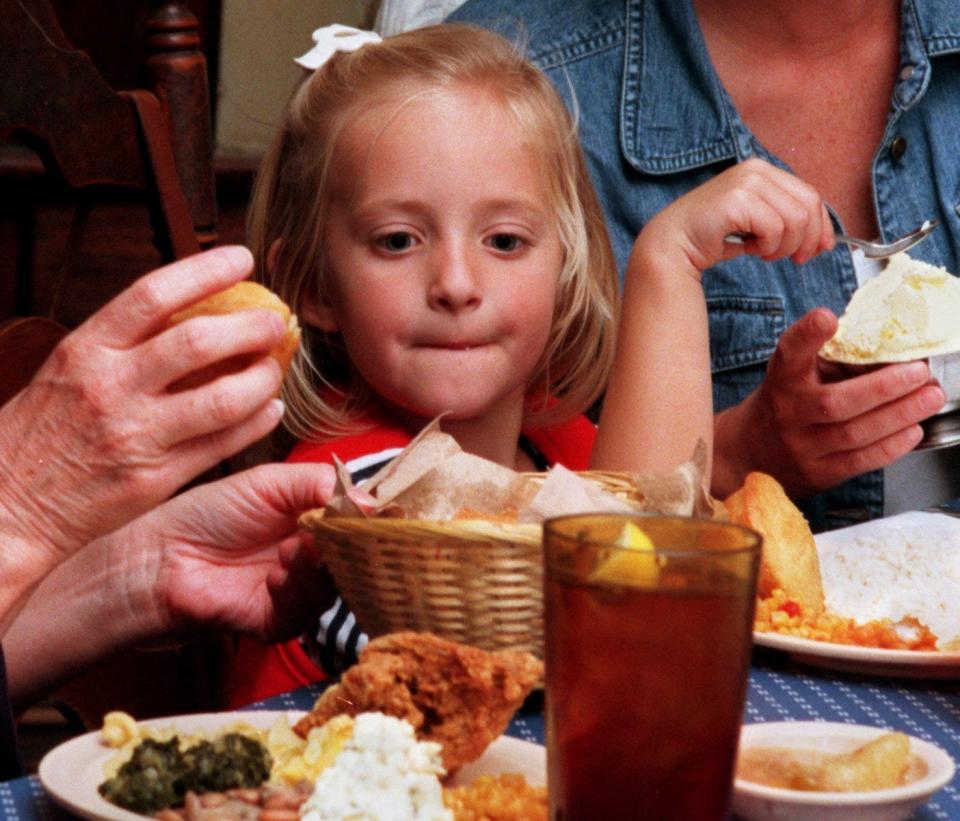
There was something special about Hopkins Boarding House on the corner of North Spring and West Strong Street. Strangers would sit “elbow to elbow” with one another, talking and laughing, over home-cooked vegetables, meats and biscuits passed around the table family-style, Becky Roper Matkov wrote in her 1987 book, “Florida’s Historic Restaurants and their Recipes.”
The crowds were hard to stop when Arkie “Ma” Hopkins would make her crispy fried chicken, thick brown gravy and “pulley bones” for those who were lucky enough to know to ask for them.
She was everyone’s grandmother, and the restaurant’s art was made up of family pictures of weddings, children and grandchildren on the mantels.
“Mrs. Hopkin’s son, her niece, grandchildren and two pictures of Jesus Christ,” PNJ reporter Mike McLeod described the décor in a 1977 issue. The tablecloths were plastic, the chairs were rustic, but the food was so good it could put you into a coma afterward.
The boarding house first opened in 1948 at 415 N. Palafox, before relocating to a spacious, two-story home built circa 1900 in North Hill’s historic district on 900 N. Spring St, Matkov wrote. Just like a real family home, Ma had strict house rules — no drinking, smoking or wearing hats around the table.
Sitting on a stool “a little bit like an officer in a battle scene,” Ma would cry out orders for drink refills and potato salad, McLeod wrote.
Still, she embodied Southern hospitality and grace all the way up until her death at 67 of an apparent heart attack after leaving her sister’s home to head to church in 1986. While it was left in the capable hands of her relatives, the restaurant eventually closed in 2004.
The menu, serving breakfast, lunch and dinner, was packed with comfort food favorites, including collard greens, butter beans, black-eyed peas, chicken and dumplings and beef stew. There were always homemade desserts, such as pies and cakes, if you were ever able to leave enough room for them. It wasn’t uncommon for her to feed hundreds every day with customers lined up at the door or sitting out on the rocking chairs on the porch, however she grew the reputation from scratch, with the first lunch feeding only nine people.
The restaurant has gained a reputation for a multitude of things aside from the delicious food — ranging from a customer finding a diamond in his salad in 1984, a boarding house resident that stayed 25 years, and even a visit from the New Kids on the Blocks in August of 1990.
“At Hopkins’ you can never be quite sure who you are sitting beside – customers range from prominent businessmen, electricians, construction workers, truck drivers, policemen, high school and college students and service men,” former PNJ reporter Suzanne Bal wrote.
It was the place that reminded its customer of simpler times and the good old days even back in the 1967, where it was regarding as being a bit of “unchanged America.”
One customer recounted that the atmosphere brought them back to 1920. “When I glance out into the streets while sitting here on the porch, I almost can visualize old Model T Fords chugging down the street rather than more modern cars,” the customer told Bal.
Jerry’s Cajun Café and Market
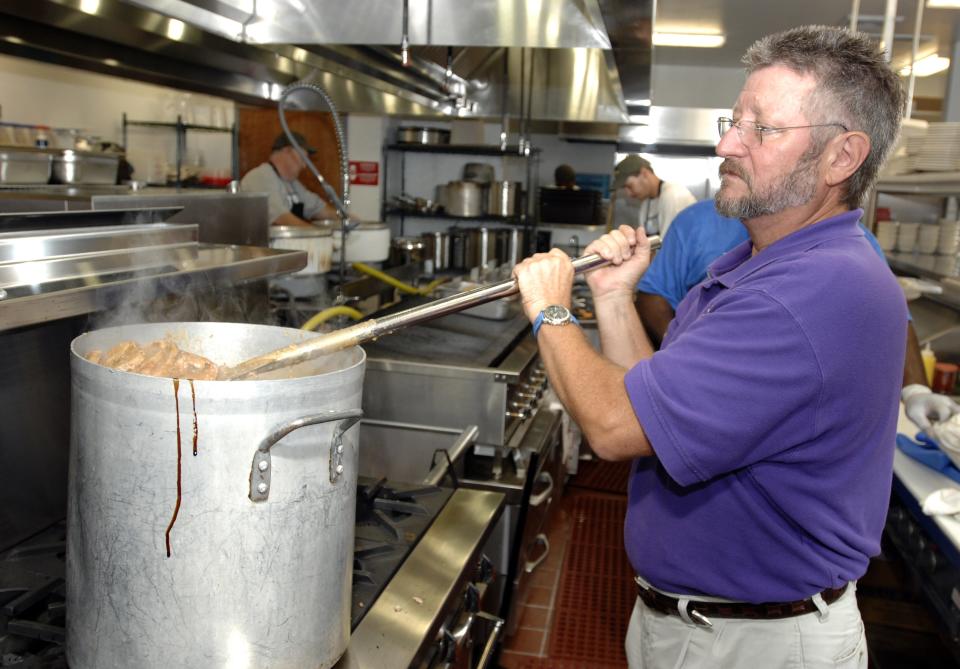
This Louisiana-inspired café was originally opened by the restaurant’s namesake, Jerry Mistretta, in a North Pensacola strip mall in August 1993 in a former K&B Drug store property before outgrowing it and relocating to a larger location with a spacious porch on 6205 N. Ninth Ave. in November 1998. The restaurant had been his dream since childhood.
Authenticity and freshness were key to Mistretta, who offered some of the harder-to-find Cajun specialties, such as J.S.B., “Jerry’s special boudin,” which is a Cajun link sausage covered with a special sauce and mild chili before being topped with cheddar cheese and hitting the oven. Other hot sellers included the crawfish po’boys, muffulettas and seafood gumbo.
The location was a favorite until a major fire struck during the lunch hour in 2007, leaving half-eaten plates of crawfish etouffee and hot sauce packets still sitting on the front porch as the restaurant was left a shell. The fire caused an estimated $300,000 to $500,000 in damage but ended up costing over $1 million. But Mistretta vowed to rebuild and was open again after seven months of restoration. The menu remained unchanged, and the zydeco music played on.
“It made me sick,” Mistretta told the News Journal after seeing the flames in 2007. “This is my dream.”
After several hardships, he opened Jerry’s Bistreaux Food Trailer where it eventually found a home in the Gulf Coast Brewery parking lot in 2019 but has since closed permanently.
Mistretta bounced back from a destructive fire at his former location on North Ninth Avenue, a bankruptcy-inducing divorce, the unexpected death of a business partner in 2016 when he was ready to reboot on W Street and then most recently, being temporarily shut down by the city of Pensacola over a controversial fire code violation.
Even so he kept his business alive for decades and kept Pensacola’s stomachs full of tasty Cajun cuisine.
Jamie’s Restaurant
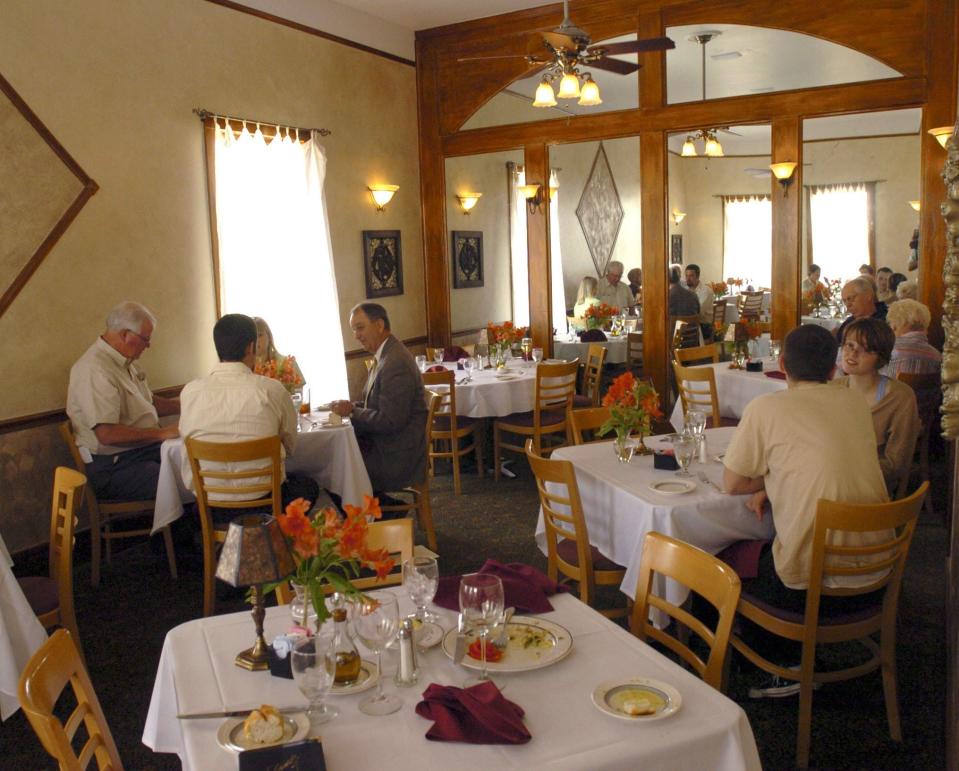
French cuisine is hard to come by these days in Pensacola, but Jamie’s gave Pensacolians a taste of the fancier side of life with state-of-the-art French cooking. As opposed to some of the city’s most popular dives and hole-in-the walls, Jamie’s at 424 E. Zarragoza Street in the Seville Square historic district was a white linen lined, gas fireplace warmed Victorian cottage that brought the best of French cuisine. Most times, it was reserved for birthdays, anniversaries and promotions.
But the food was of the kind that you couldn’t just find anywhere. The Cailee Farci, a European quail dish stuffed with mushrooms and Italian sausage served with Madeira sauce, was a starter – or at Jamie’s, one of the les preludes (appetizers). The entrees provided opportunity to experiment even further by choosing special preparations of shrimp, steak, veal, veal sweetbreads, chicken and lamb.
The menu was petite but attentive to every detail, like the fan-favorite grilled lamb chops, marinated in olive oil, garlic and fresh herbs and served with minted garlic orzo.
The restaurant’s crab cakes, which served as a popular entrée at lunch or lighter appetizer at dinner, were a house specialty with a house recipe that spanned decades.
The restaurant would carry a certain ambiance about it with classical guitar, wine by the glass and a decadent chocolate torte for dessert.
In a 1989 article published in the News Journal and written by Jenifer McCoy, she best described it as a “very romantic, very intimate, very Edenic restaurant of delights."
The restaurant was eventually purchased by Russell Scarritt, who worked in every capacity at Jamie’s Restaurant prior to taking over as owner with his wife, Linda. The two bought the restaurant from owner, Gary Serafin, in late 1999 for $300,000.
“When people walk through the front door, I want them to feel as if they’re walking back in time. I want Jamie’s to represent 1879 and be a part of the past in look and feel," Scarritt said.
The restaurant sustained almost $100,000 in damage from Hurricane Ivan in 2004 and eventually reopened with white tablecloths and fresh flowers intact but closed in 2008.
Mesquite Charlie’s
This wild West-inspired Pensacola restaurant first opened in 1984 in Pensacola’s west side on 5901 North W St. and made a big first-impression with about 500 seats in the dining room. The restaurant took you back the old, Wild West through the wall art and memorabilia. But the décor wasn’t just the restaurant theme, but also in its cooking, like the hand-cut, fresh-aged beef cooked on an open flame over from 100% real Mesquite charcoal from Mexico.
“Walk into Mesquite Charlie’s and take a step into an Old West saloon,” PNJ reporter Heather Corcoran wrote in a 1997 issue. “The menu is filled with fare you’d imagine would fill a cowboy’s diet.”
Menu items like the Wrangler Burger, the Cowgirl T-bone or a plate-sized porterhouse put a spotlight on the restaurant’s beef. But the restaurant also expanded to seafood, and served items like blackened Gulf tuna, fried Gulf shrimp and bourbon salmon.
Though the food was designed to be top tier, the owners ensured the environment remained casual with a game of ring toss ready to play on the patio saloon.
Mesquite Charlie’s president and founder Charles “Charlie” Gray created the place as a way for anyone, rich or poor, to get a good steak at a good price.
The waitresses were instructed to ask customers to remove their tie before turning it into a “tie corpse” to help preserve the restaurant’s casual atmosphere.
“And, men, here’s a quick tip: Don’t wear a tie. If you do, they’ll cut it in half or take it, as evidenced by more than 3,000 ties hanging around!” PNJ news correspondent Taris Savell wrote in 2006.
Gray died at 59 in 1994, but the restaurant was able to continue, with his sons Mark and Mickey managing the restaurant until its closure in 2012.
H&O Restaurant
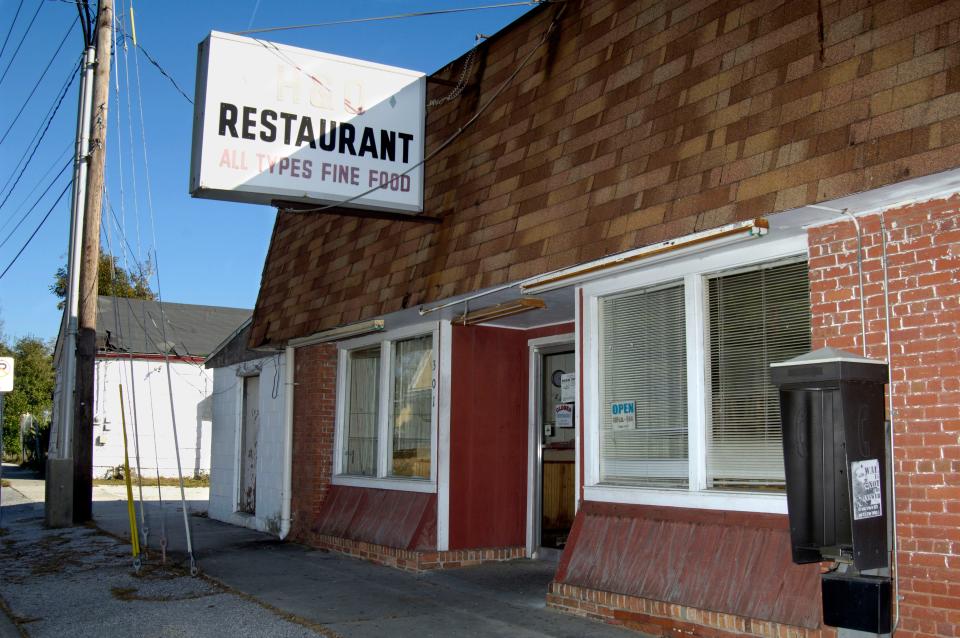
H&O Restaurant, known as H&O Café, was a historic Southern style soul-food restaurant on Pensacola’s eastside at 301 E. Gonzalez St. and one of the first Black-owned restaurants in the Pensacola area.
The café first opened in 1937 when President Franklin Roosevelt was starting his second term of office, and the minimum wage was 25 cents an hour.
But the restaurant’s history in Pensacola dates back to the 1920s when it first opened as a grocery store. The restaurant’s namesake was a nod to the owners' wives, Hattie and Ola.
Longtime owner Raymond Grier operated the restaurant for over 40 years, but the restaurant has been in the family much longer. His brother, Givens Grier, purchased it 15 years before he did.
“This has always been a Black-owned business,” Raymond Grier said in a 1997 interview with PNJ. “But we cater to all races. Sometimes there are more whites in here than blacks. Some prominent Pensacolians eat here.”
When the café first opened, hamburgers were only a dime, a double ice cream cone a nickel. Even though prices may have changed with the times, the restaurant still remained open for business half a century later.
“They respect you here. It’s the best place to eat in Pensacola,” customer Ernest Porter told the News Journal in 1997.
The fried chicken, country steak and gravy, sweet potatoes, lima beans and peas were popular choices that kept customers coming back to fill the small shop. The size was somewhat misleading as the handful of tables and booths were only a slice of the restaurant’s size, with a larger dining room opening up to the side of it.
The restaurant was known for serving the community with homecooked meals and low prices, like a dozen fried shrimp for $4.95, a fried half chicken for $3.35, or a pork chop, eggs and grits for $1.95, according to a 1981 article.
Grier depended on the “at home” atmosphere to keep customers coming back, even when the world opened up with options as Interstate I-10 opened a few feet away from his restaurant.
For decades H&O was packed with regulars and a loyal lunch crowd that filled the room with lively conversation over the sound of the jukebox.
Prior to the late 1990s, H&O operated 24 hours a day, seven days a week, and remained opened 24 hours on weekends until Hurricane Ivan struck in 2004. The restaurant closed in 2015.
City Grocery
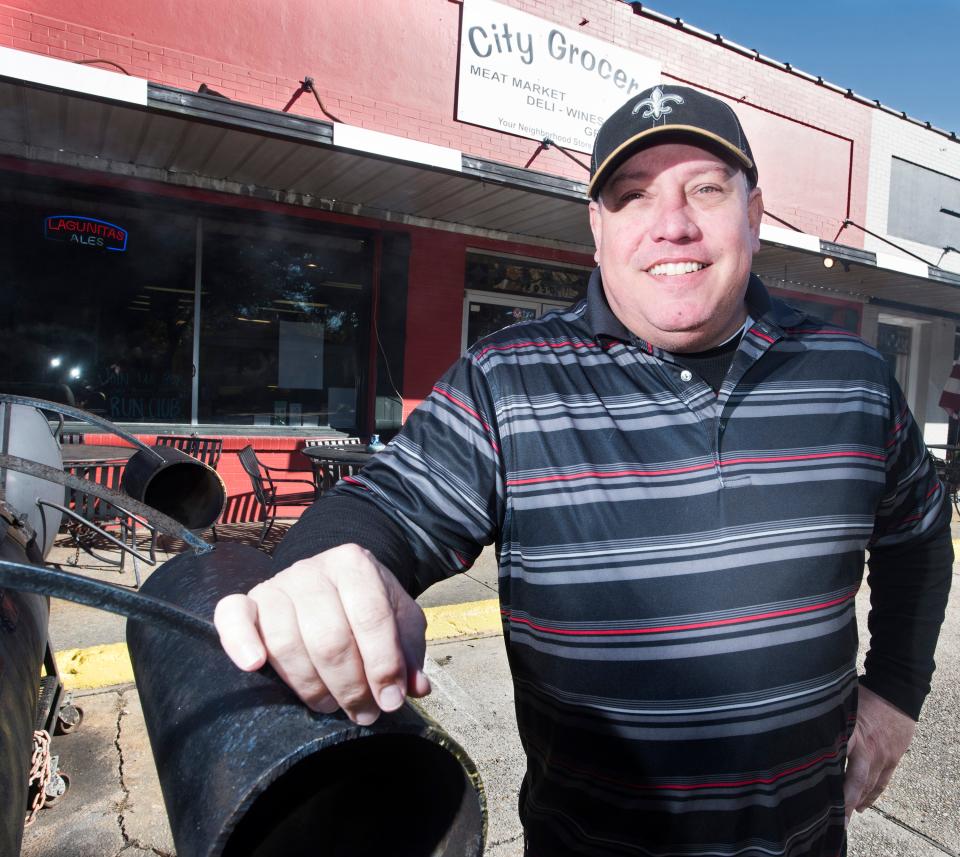
City Grocery brought East Hill the charm of an old school mom and pop shop on 2050 N. 12 Ave. since 1972. However, the neighborhood hotspot made a shift away from its roots as only a grocery, but expanded to serve some of the city's best barbecue, craft sandwiches and a variety of rotating soups.
The shop was purchased by Mike Lutts in 2004, only to be hit by Hurricane Ivan months later, but the community helped him rebuild. The restaurant changed hands again under new owner Jeff Shirk in 2015, owner of Heritage Farms of Northwest Florida who set out to bring his farm fresh experience to the 40-plus year old business. This came down to every detail, like the from-scratch raspberry pecan honey mayonnaise, the southwest sauce or white Alabama barbecue used on the half-chickens.
One of the daily signature sandwiches, “The Master Chief,” named after former local naval submarine master chief and regular customer, John Snyder, made with brisket, mayo, barbecue sauce, tomato, cheddar and pickles on a ciabatta bun that became an instant-seller.
The store offered a little bit of everything, serving as a grocery, deli and café with specialty sandwiches and a wide variety of wines.
However, that all changed when the neighborhood staple announced in would be closing in March of 2018 to move to 9310 Baldridge Road just off Nine Mile Road at the former Cock of the Walk, a popular five-state chain that won over Pensacola for 30 years with its cornbread skillets and Southern cooking.
Shirk noted reasons such as limited parking, maintenance issues with the building and the area’s shifting market dynamics following the arrival of Publix as reasons behind the move. Shirk then rebranded as Jeffrey’s as a barbecue and homestyle restaurant with hefty portions and local pork. The restaurant has since closed.
This article originally appeared on Pensacola News Journal: Pensacola all-time favorite restaurants include Hopkins, H&O, Jaime's

